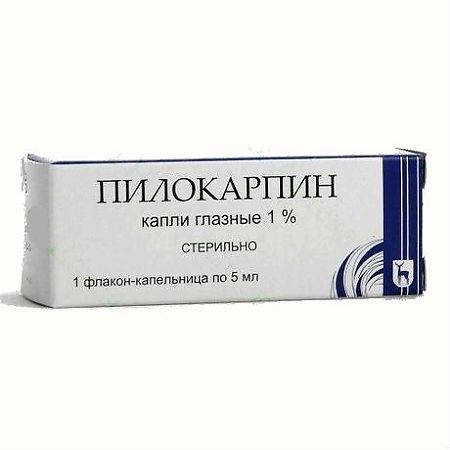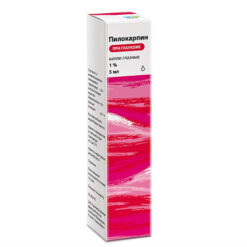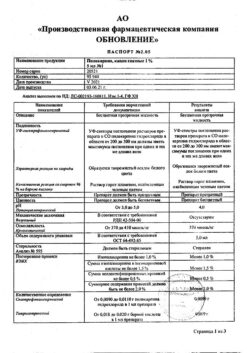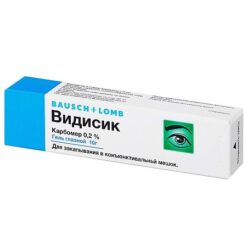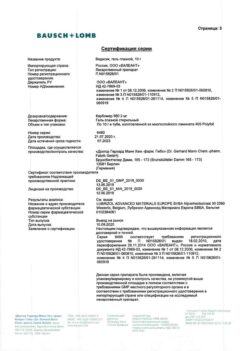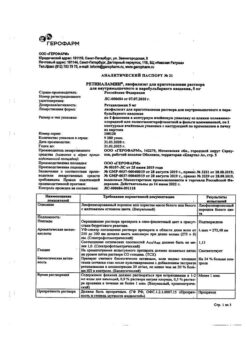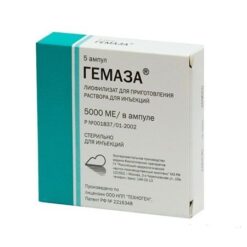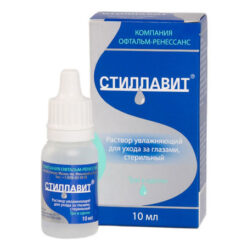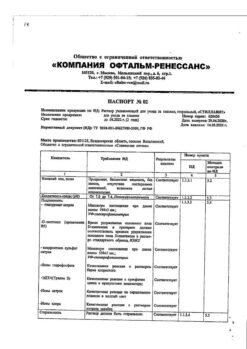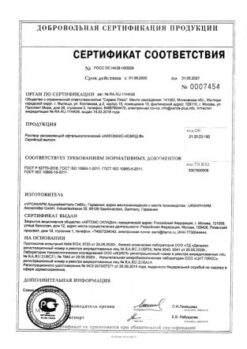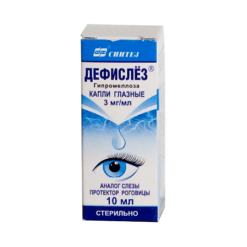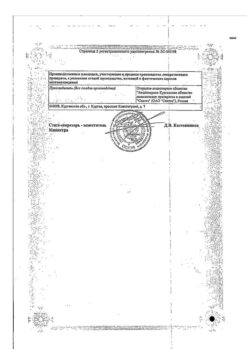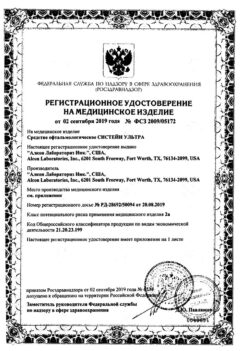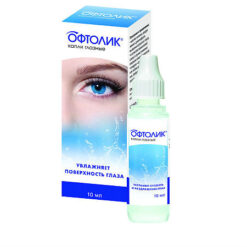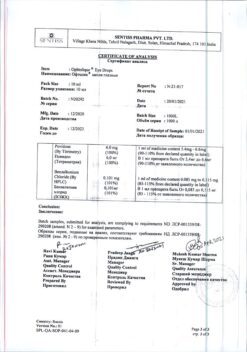No products in the cart.
Pilocarpine, eye drops 1% 5 ml
€1.00
Out of stock
(E-mail when Stock is available)
Description
Pilocarpine is a cholinoergic agent that stimulates muscarinic receptors.
Pilocarpine causes pupil constriction and reduces intraocular pressure by improving the outflow of intraocular fluid.
In open angle glaucoma, pilocarpine action is mainly due to easing aqueous outflow over a period of 4 to 14 hours.
In closed-angle glaucoma, constriction of the pupil results in opening of the iris-corneal angle and increased aqueous outflow.
Indications
Indications
For use in ophthalmology: acute onset of glaucoma, secondary glaucoma (central retinal vein thrombosis, acute obstruction of retinal arteries, optic atrophy, retinal pigment degeneration), chronic open-angle glaucoma, corneal abscess.
The need for pupil constriction after mydriatic instillation.
Active ingredient
Active ingredient
Composition
Composition
Active ingredient:
pilocarpine hydrochloride 10 mg;
Supplementary substances:
boric acid, 19 mg;
water for injection, up to 1 ml
How to take, the dosage
How to take, the dosage
In ophthalmological practice usually 1 or 2% pilocarpine solution is used 2-4 times a day, less often 5 or 6% solutions are prescribed. Before going to bed you can put 1 or 2% pilocarpine ointment behind the eyelids.
Systems with prolonged release of pilocarpine (eye films) 40 or 20 mcg are used when 3-4 times a day is not enough to normalize intraocular pressure; the film is applied 1-2 times a day behind the lower eyelid with ocular forceps (immediately after applying the film the eye must be held still for 30-60 seconds to allow the film to hydrate and become soft).
In pilocarpine therapy, intraocular pressure should be monitored regularly. To reduce absorption after dropping pilocarpine it is recommended to squeeze the lacrimal duct for 1-2 minutes – press at the inner corner of the eye with a finger. The physician should teach the patient to use continuous-release systems on their own and warn them about the development of tolerance if they are used for prolonged periods of time.
Pilocarpine is used with caution in people who are engaged in driving motor vehicles and other potentially dangerous activities that require clear vision, high reaction speed, and increased attention.
Interaction
Interaction
The effects of pilocarpine cease (are weakened) with the use of drugs of the atropine group. Phenylephrine and timolol maleate potentiate reduction of intraocular pressure by reducing intraocular fluid formation.
Pilocarpine increases the side effects of beta-adrenoblockers (intracardiac conduction disorders, marked bradycardia). When pilocarpine is combined with adrenomimetics on the pupil size, mutual antagonism is manifested. M-cholinomimetic activity of pilocarpine is enhanced by anticholinesterase agents, reduced by phenothiazine derivatives, tricyclic antidepressants, clozapine, chlorprotixen.
Hypotension and bradycardia may occur during fluorotonan anesthesia in patients who use pilocarpine hydrochloride in eye drops.
Contraindications
Contraindications
Hypersensitivity, iridocyclitis, iritis, conditions in which pupil constriction is not recommended (e.g., after ophthalmic surgeries, except when the pupil must be constricted immediately after surgery to prevent synechiae); high myopia with a risk of retinal detachment, retinal detachment in the history.
Side effects
Side effects
When used topically: rarely – headache;
Long-term use – follicular conjunctivitis, contact dermatitis of the eyelids, pronounced miosis (1-1.5 mm in diameter).
Additional information
| Manufacturer | Moscow Endocrine Plant, Russia |
|---|---|
| Medication form | eye drops |
| Brand | Moscow Endocrine Plant |
Other forms…
Related products
Buy Pilocarpine, eye drops 1% 5 ml with delivery to USA, UK, Europe and over 120 other countries.

